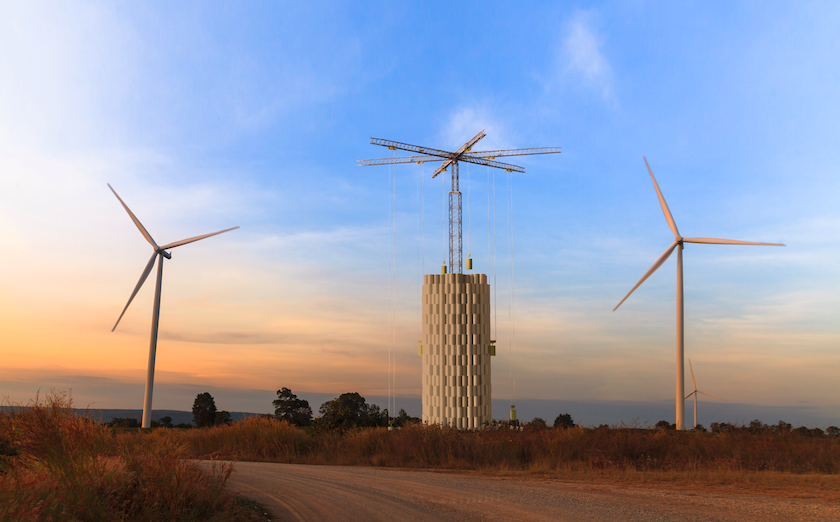

Stem Inc. and Energy Vault have revealed strategic changes and updates following recent listing warnings from the New York Stock Exchange (NYSE).
The two are among a wave of energy storage providers that went public during the boom in special purpose acquisition company (SPAC) mergers the global financial sector saw a couple of years ago.
Enjoy 12 months of exclusive analysis
- Regular insight and analysis of the industry’s biggest developments
- In-depth interviews with the industry’s leading figures
- Annual digital subscription to the PV Tech Power journal
- Discounts on Solar Media’s portfolio of events, in-person and virtual
In late August, Stem Inc, a provider of energy storage systems and energy management solutions, received a written notice from the NYSE that the average price of its common stock had fallen below the US$1.00 threshold required for continued listing.
Gravity-based energy storage technology, battery storage and green hydrogen system integrator Energy Vault received a similar notice in mid-September.
NYSE gave each company six months to regain compliance with the minimum stock price listing requirement. As of 4pm yesterday, Energy Vault’s stock was trading at US$0.96, while Stem Inc.’s stock price was just US$0.46.
Stem Inc. to focus on ‘higher-margin’ software and services offerings
Stem Inc. had already initiated a strategic review of its business when it got the warning. The company guided an expectation that it would be EBITDA positive for 2024 in its May financial results release. That guidance was dropped in the subsequent quarter however, as Stem Inc. reported a 63% year-on-year fall in revenues in an early August financial results release and cut its full-year revenue guidance by more than half.
That month, it hired a new CFO, Doran Hole, from renewables and energy efficiency solutions company Ameresco. In September, longstanding CEO John Carrington stepped down, taking an advisory role until the end of this year.
Stem Inc. announced the outcome of its strategy review just over a week ago (1 October). It has reprioritised its go-to-market strategy and leadership structure with an emphasis on higher-margin software and services offerings versus capital-intensive project work and expanded its consulting service offering.
Interim CEO David Buzby claimed the more predictable revenues from software and services would “accelerate a new path to profitable, scalable growth.”
“We are confident that our new strategy will drive more predictable recurring business, shorten our runway to revenue, significantly improve gross margin profile, and lower our working capital usage,” CFO Doran Hole said.
“As we assess our cost structure, we will seek to maximise profitability and operating leverage, while still delivering exceptional value to customers with our talented employee base.”
Stem Inc. has always emphasised the importance of software in its overall package of services and solutions, self-describing as an “AI-driven” provider of smart energy storage from its beginnings combining peak shaving and grid services for commercial and industrial (C&I) customers in the California market.
Subsequent moves into distributed front-of-the-meter (FTM) solar-plus-storage projects in Massachusetts were accompanied by acquisitions and expansion into renewable energy asset management services. The latest move leans further into the industry’s higher-margin software and services side and potentially away from more Capex and time-intensive hardware and turnkey project delivery.
Energy Vault CEO: Own-and-operate strategy to create ‘long-term value’
Energy Vault, meanwhile, has already seen significant pivots, or perhaps diversification, in its strategy over the past few years.
It caught industry—and investor—attention for its gravity energy storage technology, based on systems of raising and lowering weights to store and release energy kinetically, refining an original, unwieldy-looking crane-based design to a design more akin to the rectangular frame of a commercial office building.
The first 25MW/100MWh large-scale project of its EVx gravity storage system was commissioned earlier this year in Rudong, China. The technology was licensed to developer Atlas Renewable for customer China Tianying (CNTY), a waste and environmental services group.
While working to commercialise that technology, Energy Vault moved into battery energy storage system (BESS) system integration, hiring former Greensmith Energy CEO John Jung to lead that division, and it also began working in green hydrogen.
In announcing financial results for the first quarter of this year, Energy Vault attributed a 30% year-on-year fall in revenues to the seasonality and timing of revenues associated with its gravity storage business.
From full-year 2023 revenue of US$341.5 million, it offered guidance following Q1 results for revenue this year in the range of US$50 – US$100 million.
Energy Vault announced a growth strategy at an investor day in May and offered an update earlier this month (2 October).
The strategy included the launch of project financing for Calistoga Resiliency Center, a large-scale green hydrogen long-duration energy storage (LDES) facility in California, and the expansion of its BESS integration business into Australia, where it recently won a 400MWh contract for two projects in development by ACEN Australia.
The company is also launching an own-and-operate independent power producer (IPP) and has hired financial services group Jefferies to explore options to increase capital, including project financing, monetising tax credits in the US, and optimising capital deployment.
CEO and chairman Robert Piconi claimed the strategy would position the company to “create sustainable, long-term value for our shareholders,” emphasising in particular the strategy to own and operate assets as well as provide or integrate the technologies.
“Leveraging the depth of our internal engineering, storage technology breadth and project execution expertise to own and operate more assets will help diversify our revenue streams and support our growth, while ensuring we are maximising our capital efficiency and resources,” Piconi said.
The move somewhat echoes the shift made by other providers of novel non-lithium storage technologies, such as ‘CO2 Battery’ startup Energy Dome and advanced compressed air energy storage (A-CAES) company Hydrostor, each of which in addition to licensing and selling their technology have moved into developing projects that they would own once in operation.






